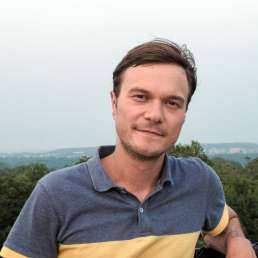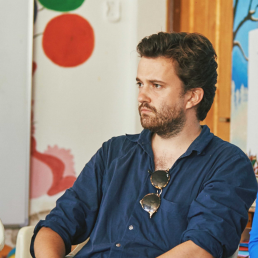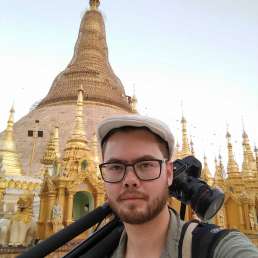Authors and Contributors
Ben Bansal
— 1981, Berlin
is an economist with degrees from the School of Oriental and African Studies (SOAS) in London and Cambridge University. Ben has worked in finance for most of his career, as an economist, fund manager and banker. Since going freelance a few years ago, several of his assignments have dealt with Myanmar’s economic transition, bringing him to Yangon and piquing his interest in the city. His academic research interests include the economic history of post-war Tokyo and contemporary urban development issues in South and Southeast Asia.
Elliott Fox
— 1987, Paris
is a media adviser in the humanitarian and human rights sectors. He studied politics and communications at SOAS, the London School of Economics and City University’s Graduate School of Journalism. He started working on Myanmar issues while interning at the United Nations in 2008. Since then he has traveled to Myanmar regularly: as a press officer for visiting former heads of state and Nobel Peace Prize laureates, as a tourist and, of course, to write this book.
Manuel Oka
— 1983, Munich
is an architect and freelance photographer. Manuel graduated in architecture from Vienna Technical University and went on to study in Yoshiharu Tsukamoto’s graduate studio at the Tokyo Institute of Technology. He worked for architectural firms Fumihiko Maki and KMDW in Tokyo before moving to Munich where he is currently working. Manuel spent several months researching the book and shooting in Myanmar. His photos can be found at manueloka.com
Special Thanks
In memory of Bob Percival.
Above all, we would like to thank Franz Xaver Augustin and the Yangon Goethe-Institut for their enthusiasm and generous support. Kecia Fong provided patient mentorship and invaluable help with heritage related questions. Heinz Schütte generously read the entire manuscript and provided valuable feedback. Zaw Lin Myat supported the project from the start and helped wherever he could. In U Hpone Thant (Harry) we found a most helpful resource to answer many of our particular questions about Yangon’s post-independence history, and where it unfolded. In Yangon, many people helped us with their expertise, during interviews: U Tun Than, Daw Moe Moe Lwin, Dr. Kyaw Lat, U Sun Oo, Maki Morikawa, Masahiko Suzuki, Amelie Chai and Stephen Zawmoe Shwe deserve a special mention. Special gratitude must also go to U Kin Maun Lwin for taking the time to take us around Yangon University. U Soe Lin provided valuable insights into Burmese architecture in Washington, D.C. Patrick Robert encouraged this project from the beginning and unlocked usually off-limits buildings for the authors, connecting them with many other individuals along the way. We are indebted to Graham and Charmaine Lewis for kindly translating and paraphrasing a Burmese article about the Martyrs’ Memorial. Bob Percival has been a great supporter and friend of the authors, enlivening their time in Yangon with wisdom and good humour. Takashi Kamiyama’s logistical help was greatly appreciated. Sarah Rooney, Melissa Cate Christ, Petr Kozma, Susmit Banerjee, Laetitia Millois, Ilaria Benini, Ben White, Bram Steenhuisen, U Thurein Aung, Ben Wolford, Stewart Traill, Elizabeth Rhoads and Oliver von Braun-Dams provided valuable feedback or helped with individual research-related questions. Special thanks to Kasita Rochanakorn for copy-editing the manuscript. The usual caveats apply.
Copy-editing
Kasita Rochanakorn
Proofreading
Mariangela Palazzi-Williams
Final corrections
Clarice Knowles
Design
Manuel Oka
Maps
Katrin Soschinski
QR codes
Christoph Gößmann
Image Processing
Tiger Printing (Hong Kong) Co., Ltd.
Printing
Spindulio Spaustuvė, Kaunas



